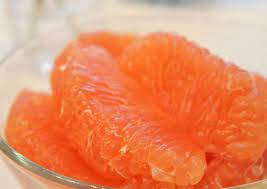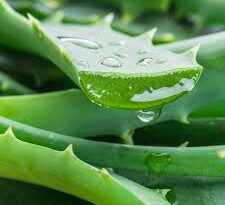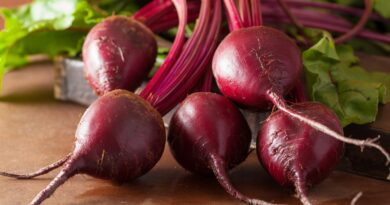The Breadfruit Fruits: Economic Importance, Uses, and By-Products
Breadfruit fruits are large, round or oblong fruits that grow on the breadfruit tree (Artocarpus altilis), a tropical tree native to the Pacific Islands. These fruits are a staple food in many tropical regions and are known for their starchy texture and versatile culinary uses.
When ripe, breadfruit fruits typically have a greenish-yellow or yellow-brown outer skin with a rough, bumpy texture. The flesh inside ranges from creamy-white to pale yellow and has a firm, starchy consistency reminiscent of potatoes or bread dough.
Breadfruit fruits are often harvested when mature but still firm. They can be cooked and consumed at various stages of ripeness, offering different culinary possibilities. When green and unripe, breadfruit can be boiled, steamed, or roasted and used as a starchy vegetable in savory dishes. As it ripens, the fruit becomes sweeter and softer, making it suitable for baking, frying, or mashing into desserts, puddings, or bread-like preparations.
In addition to its culinary uses, breadfruit is valued for its nutritional content. It is a good source of carbohydrates, fiber, vitamins, and minerals, including potassium and vitamin C. Breadfruit is also considered a sustainable food crop, as it produces high yields per tree and requires relatively low input of water and fertilizers compared to other staple crops.
Overall, breadfruit fruits are a versatile and nutritious food source with a long history of cultivation and consumption in tropical regions. They offer a unique flavor and texture profile that makes them a popular ingredient in a wide range of dishes, from savory stews to sweet desserts.
The Economic Importance and Uses of Breadfruit Fruits

1. Food Source: Breadfruit fruits serve as a staple food source in many tropical regions, providing sustenance for millions of people. They are versatile and can be cooked in various ways, including boiling, roasting, frying, and baking.
2. Nutrition: Breadfruit fruits are rich in carbohydrates, fiber, vitamins, and minerals, making them a nutritious addition to the diet. They provide energy and essential nutrients, contributing to overall health and well-being.
3. Subsistence Agriculture: In regions where breadfruit trees grow abundantly, the fruits play a crucial role in subsistence agriculture, providing a reliable source of food for local communities. They are often cultivated in home gardens and small farms for household consumption.
4. Cash Crop: Breadfruit fruits are also grown as a cash crop in some areas, where they are sold in local markets and exported to other regions. This generates income for farmers and supports rural economies.
5. Traditional Medicine: In traditional medicine practices, various parts of the breadfruit tree, including the fruits, leaves, and sap, are used for their medicinal properties. They are believed to have therapeutic effects for treating ailments such as skin infections, digestive issues, and respiratory problems.
6. Culinary Diversity: Breadfruit fruits contribute to culinary diversity by adding unique flavors and textures to dishes. They can be used in both savory and sweet recipes, ranging from soups and stews to desserts and snacks.
7. Food Security: Breadfruit trees contribute to food security by providing a reliable source of food, especially in regions prone to food insecurity and hunger. Their ability to produce large quantities of fruits throughout the year helps mitigate food shortages.
8. Agroforestry: Breadfruit trees are often integrated into agroforestry systems, where they provide shade, soil stabilization, and additional income for farmers. They complement other crops and contribute to sustainable land management practices.
9. Livelihoods: Breadfruit cultivation and processing provide livelihood opportunities for farmers, harvesters, processors, and traders involved in the production and marketing of breadfruit products. This supports rural livelihoods and improves socio-economic conditions in breadfruit-growing regions.
10. Cultural Significance: Breadfruit fruits hold cultural significance in many societies, where they are celebrated in traditional ceremonies, rituals, and culinary traditions. They are often associated with abundance, prosperity, and hospitality.
11. Industrial Applications: Breadfruit fruits can be processed into various industrial products, such as flour, starch, and animal feed. These value-added products diversify the use of breadfruit and create additional income streams for producers.
12. Environmental Benefits: Breadfruit trees contribute to environmental conservation by sequestering carbon, preventing soil erosion, and providing habitat for wildlife. Their cultivation promotes biodiversity and ecosystem resilience.
13. Urban Agriculture: In urban areas, breadfruit trees are cultivated in home gardens, community orchards, and urban farms, providing fresh fruits and green spaces for city dwellers. They enhance urban resilience and food sovereignty.
14. Climate Resilience: Breadfruit trees are resilient to climate change and adverse weather conditions, making them suitable for cultivation in tropical regions prone to hurricanes, droughts, and other environmental challenges. They contribute to climate-smart agriculture practices.
15. Export Industry: In some regions, breadfruit fruits are exported to international markets, where they are in demand for their exotic flavor and nutritional value. This creates opportunities for global trade and economic growth.
16. Soil Improvement: Breadfruit trees have deep roots that help improve soil structure and fertility. They can grow in poor soils and degraded lands, restoring ecosystem health and productivity.
17. Community Development: Breadfruit cultivation and processing projects contribute to community development initiatives, including education, healthcare, and infrastructure improvements. They empower local communities and foster social cohesion.
Read Also: The Thyme Axillary Buds: Economic Importance, Uses, and By-Products
The Products and By-products That Can Be Derived From Breadfruit Fruits

1. Breadfruit Flour: Breadfruit fruits can be dried and ground into flour, which is used as a gluten-free alternative to wheat flour in baking and cooking. Breadfruit flour is rich in nutrients and adds a unique flavor to baked goods.
2. Breadfruit Chips: Sliced breadfruit fruits can be fried or baked to make crispy chips, a popular snack enjoyed in many tropical regions. Breadfruit chips are savory, crunchy, and often seasoned with spices or salt.
3. Breadfruit Puree: Cooked breadfruit fruits can be mashed or pureed into a smooth consistency, which can be used as a base for soups, sauces, and desserts. Breadfruit puree adds creaminess and flavor to dishes.
4. Breadfruit Jam: Breadfruit fruits can be cooked down with sugar to make jam or preserves, which can be spread on toast, crackers, or used as a filling for pastries and desserts. Breadfruit jam has a sweet and tangy flavor.
5. Breadfruit Ice Cream: Breadfruit puree can be incorporated into ice cream and frozen desserts, adding a creamy texture and tropical flavor. Breadfruit ice cream is a refreshing treat enjoyed in hot climates.
6. Breadfruit Curry: Breadfruit chunks can be cooked in a flavorful curry sauce with spices, coconut milk, and vegetables, creating a hearty and
aromatic dish. Breadfruit curry is a popular dish in Caribbean and Pacific Island cuisines.
7. Breadfruit Salad: Cooked breadfruit fruits can be diced and mixed with other ingredients such as vegetables, herbs, and dressings to make refreshing salads. Breadfruit salad is light, nutritious, and perfect for warm weather.
8. Breadfruit Fritters: Breadfruit chunks can be dipped in batter and fried until golden brown to make crispy fritters. Breadfruit fritters are a tasty appetizer or side dish served with dipping sauces.
9. Breadfruit Pancakes: Breadfruit puree can be added to pancake batter to make fluffy and flavorful pancakes. Breadfruit pancakes are a delicious breakfast option served with syrup or fruit toppings.
10. Breadfruit Curry Puffs: Breadfruit curry can be enclosed in pastry dough and baked or fried to make savory curry puffs. Breadfruit curry puffs are a popular snack or street food item in some cultures.
Read Also: 10 Medicinal Health Benefits Of Convolvulus prostratus (Bindweed)
Frequently Asked Questions (FAQs) About Breadfruit Fruits

1. How do you cook breadfruit fruits?
Breadfruit fruits can be cooked in various ways, including boiling, roasting, frying, and baking. The cooking method depends on personal preference and the desired dish.
2. Are breadfruit fruits nutritious?
Yes, breadfruit fruits are nutritious and rich in carbohydrates, fiber, vitamins, and minerals. They provide energy and essential nutrients for a healthy diet.
3. Can you eat breadfruit fruits raw?
While breadfruit fruits can be eaten raw when ripe, they are typically cooked before consumption. Raw breadfruit fruits may have a starchy taste and texture.
4. Where are breadfruit trees grown?
Breadfruit trees are native to the Pacific Islands but are cultivated in tropical regions around the world, including the Caribbean, Southeast Asia, Africa, and South America.
5. What do breadfruit trees look like?
Breadfruit trees are large, tropical trees with broad, glossy leaves and green, round fruits that grow in clusters. They can reach heights of up to 85 feet (26 meters).
6. How do you know when breadfruit fruits are ripe?
Ripe breadfruit fruits typically have a yellowish-green skin that yields slightly to pressure when pressed gently. They may also have a fragrant aroma and feel heavy for their size.
7. What does breadfruit taste like?
Breadfruit has a mild, slightly sweet flavor with a starchy texture similar to potatoes or bread when cooked. It absorbs flavors well and can be used in a variety of dishes.
8. Are breadfruit fruits and jackfruit the same?
No, breadfruit and jackfruit are different species of fruit-bearing trees in the same family (Moraceae). While they may look similar, they have distinct flavors, textures, and culinary uses.
9. How do you store breadfruit fruits?
Breadfruit fruits should be stored at room temperature until ripe, then refrigerated to prolong freshness. They can also be stored in the freezer for longer-term preservation.
10. Are breadfruit trees easy to grow?
Breadfruit trees are relatively easy to grow in tropical climates with well-drained soil and ample sunlight. They require regular watering and minimal maintenance once established.
Read Also: Complete Composting Guide for Beginners









